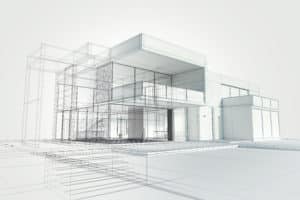

Every day we leave our homes, we embark into a world filled with structures and systems designed by professional Structural Engineers and Architects. Each structure or system created – from the bridges we drive on to the buildings we occupy – once began as a “vision” that required the knowledge and skills of both an Engineer and Architect to bring to life.
Structural Engineers and Architects often work “hand-in-hand” when designing new systems and structures. At first glance, their overall job functions on a project may seem very different, but both provide essential skills that accompany one another and, in some ways, overlap. Think of it this way; Architects determine the “what” of a building, and Structural Engineers determine the “how” of a building, making them the perfect example of teamwork at its finest.
Now, let’s dive further into this dynamic project team duo!
How do Architects and Structural Engineers Work Together?
1. Architects And Structural Engineers Are Dually Involved Throughout A Project’s Life Cycle.
Architects experience the satisfaction of working on a project from initial concept to completion. An Architect’s responsibilities carry throughout each project phase. At the same time, a Structural Engineer may be primarily involved in stages of pre-construction through post-construction of the structure’s shell, essentially limiting the amount of involvement after that.
2. Both Architects And Structural Engineers Create Drawings And Review The Designs.
Architects and Structural Engineers each focus on the structure’s interior and exterior elements when creating their plans. The architectural drawings will provide details that will turn each

structure into a visually exciting space and set the tone for the exterior façade. Then the Structural Engineer will review the drawings and make modifications to ensure the structure’s overall integrity is to be built safely for its intended occupancy usage and provide a feasible design to withstand environmental factors. A sound structure can withstand stresses from within and those in its environment. Both drawings will uniquely specify the project’s necessary materials, designated amounts, and any special building instructions.
3. Adhering To Compliance Codes And Regulations.
Both Structural Engineers and Architects are responsible for adhering to all compliance codes and regulations from the federal and local governments, as well as industry building standards related to their project. Architects deal primarily with Life Safety Code Compliance, and Structural Engineers concentrate on fulfilling building codes. They are both involved with acquiring the proper permits and approvals from agencies. Depending on the project, they may need to submit their finalized plans for review with any of the following agencies:
- Health Departments
- Building Departments

- Utility Companies
- Water Departments
- State Department of Transportation
- Environmental Departments
- …and beyond!
Safety is a shared focus and takes both specialties to satisfy all requirements.
4. Exchanging Knowledge And Information.
The amount of knowledge and information exchanged between the two entities is a valuable component of this working relationship, ultimately leading to better builds and happy clients. Architects must be willing to listen to a Structural Engineer’s warnings of structural issues and budget concerns affecting the timeline or problems that may arise during construction. This collaboration creates the right blend for achieving safety and aesthetics for any building project.
It’s A Team Effort!

While there are differences between the responsibilities of an Architect and a Structural Engineer in creating a structure or system, their roles and skills are complementary and equally as valuable throughout a project. It’s beneficial for both teams to have a solid working chemistry. The relationship between the two operates much like a track & field team: the Architect may complete their “lap” and pass the baton to the next teammate, the Structural Engineer.
Ultimately, a professional Engineering team and Architectural team have the same overall goal in mind: to successfully design a functional and safe structure. The Architectural firm is responsible for aesthetics, artistry, and initial design. The Engineering firm ensures structural integrity, compliance with codes and regulations, and safe implementation. Together, they can create almost anything!
How Can Carroll Engineering Can Help Your Next Project?
Carroll Engineering Corporation (CEC)’s structural capabilities extend to the design and analysis of both existing and proposed buildings, encompassing both single-story and multi-story structures. Our experience includes all major areas of construction: structural steel, reinforced concrete, prestressed concrete, masonry, and timber. We provide services through a project’s initial concept with drawings , pre-construction and during construction assessments, compliancy checks, integrity inspections, and consulting support. CEC has formed many professional relationships with Architectural firms and other reliable experts in the construction and design industry to provide a core team for your next project.
If you’re seeking guidance in designing your next project, our Structural team is here to help.
For more information or questions relating to Structural Engineering services and how Carroll Engineering can help with your next project, please contact Michael Traczuk, P.E., Structural Engineer at mtraczuk@carrollengineering.com or call 215-343-5700 ext 485.
